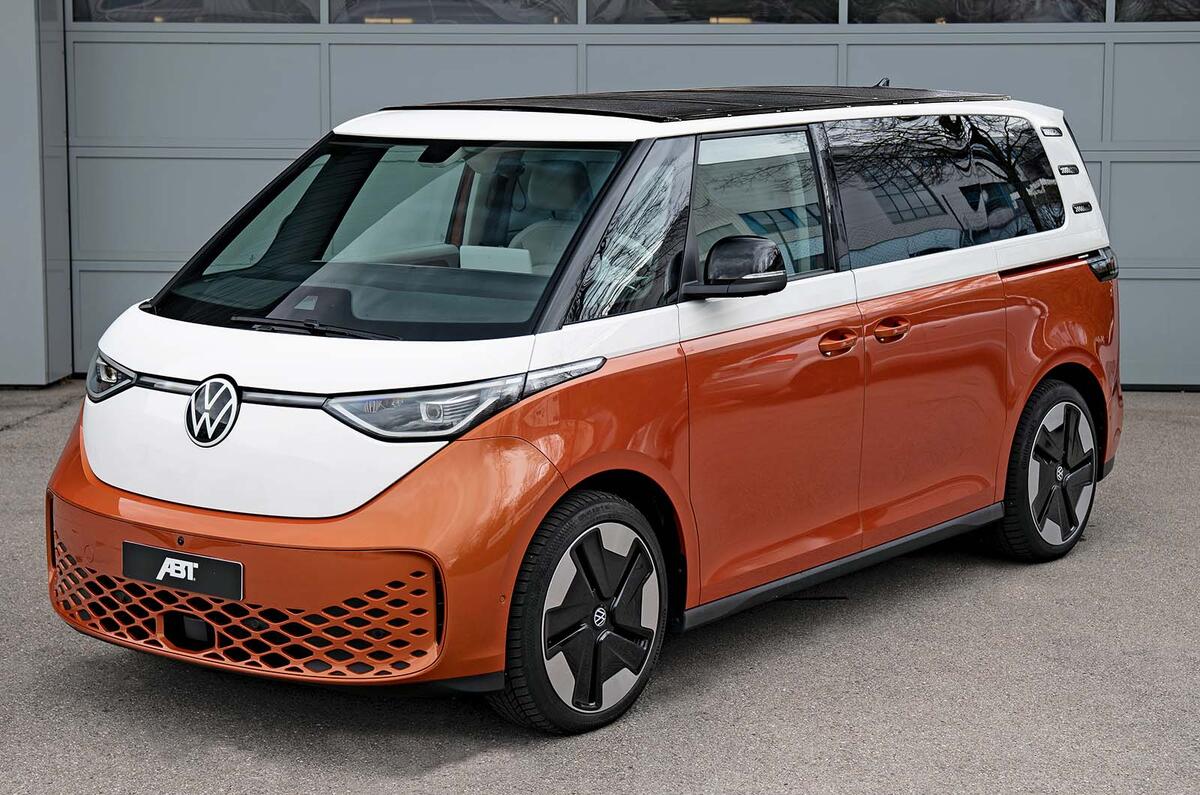A quick comparison on how much energy an electric car needs with how much a commercial solar panel harvests quickly dispels any notion of realistically powering EVs using them.
That’s not to say the idea hasn’t been tried, though. In fact, the idea goes all the way back to 1955 and General Motors’ Sunmobile. But however appealing the idea, the few hundred watts generated by the area of the average EV’s exterior is way off the power it needs to complete even a short hop.
That said, adding solar panels to an EV’s exterior could be worth considering for two reasons. One, there’s more to its energy use than the driveline, and a system capable of providing 1kW could offset the drains of air-con or heating.
Two, solar generators never stop working when the sun is up, and even a few watts add up. On a sunny day, a 1kW system could harvest almost 30 miles of range while the driver is at the office.
German tuner Abt has developed a system for the Volkswagen ID Buzz, its long roof a reasonable area for absorbing the sun’s rays. The system generates 0.6kW and charges the big main battery to the tune of an additional estimated range of 1860 miles a year. Assuming owners actually use the van for recreation, that’s a useful amount for helping to run accessories. Side panels are also under development, hopefully taking it up to 1kW.
Integrating solar panels with EVs is now being taken seriously. Toyota’s new Prius has the option of a solar roof panel that can add up to 776 miles of range per year. Dutch company Lightyear is pushing past some recent financial setbacks to bring to production an affordable solar-powered electric car.
And while Germany’s Sono failed to launch the Sion, its own solar-powered electric city car, due to a shortage of funding, it still specialises in developing solar panels for other companies’ EVs.
In March, Sono signed a purchase order with “one of the 10 largest [car makers] in the world”. Its bosses think the technology could particularly appeal to city dwellers and ease anxiety for people without off-street parking or ready access to public charging.
Sono will retrofit and integrate solar systems on anything from passenger cars to trucks and buses. Apparently, 132 square metres of its panels fitted to the refrigerated trailer of a 40-tonne articulated lorry accounts for 50% of the cooling system’s annual energy consumption.
It also claims to have a unique method of integrating solar cells into polymer, which can be used to form the exterior of vehicles (as seen on Sion prototypes).
Cost and poor return on investment is a barrier to integrating solar panels with cars, but with the massive global uptake of solar tech generally, prices are falling and continued development is raising the harvesting power of panels.
Given that we are seeing huge improvements in battery tech, it’s not much of a stretch to imagine cars with solar body panels in the not too distant future. This is an area to watch.




Join the debate
Add your comment
You say there are few manufacturers that make use of solar panels, and yet make no mention of the Genesis Electrified G80 which offers a solar roof as an option. In the nine months I have owned this vehicle with the option, I can confirm that in sunny weather (when we get any!) it does prove useful in harvesting energy.